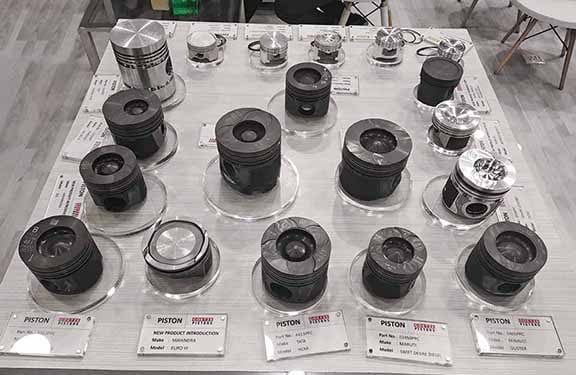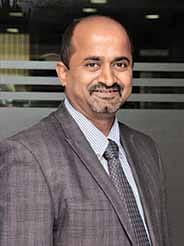In a Society of Indian Automobile Manufacturers webinar, growth in the aftermarket took centre stage.
Story by: Team ACI
The aftermarket in India is projected to attain an Rs.85,500 crore valuation by 2025. To help the stakeholders of the automotive industry tap the growth potential of the aftermarket, Society of Indian Automobile Manufacturers (SIAM) conducted a webinar. It urged the need to take a holistic approach covering every aspect of the segment. Evaluating the needs, possibilities and challenges with an end objective of customer satisfaction, crucial topics were touched upon. These included quintessential quality, curbing counterfeit, vocal for local, simplifying the supply chain, amplifying accessibility and evaluating e-commerce. Averred Prashant Banerjee, Executive Director at SIAM, “The Indian auto industry is bouncing back towards positive growth with growth in September and October at an estimated 30 per cent.” “We need a higher level of collaboration with stakeholders to be able to tap the aftermarket,” he exclaimed.
Curbing counterfeit emerged as a prime concern in the session. H J S Pasricha, Head CMD and Scientist-F, at Bureau of Indian Standards (BIS) lauded the vehicle and component Original Equipment Manufacturers (OEMs) for coming together in a cleanup exercise. He mentioned, “The aftermarket needs to be more focussed and the time is ripe for introducing a graded plan to tackle the menace of counterfeits.” “The need of the hour is to focus on the substandard parts flooding the market and encourage local suppliers to ramp up their capacity with a clear focus on meeting quality standards set by the industry,” he said. Admitting to India’s fight against counterfeit being at a nascent stage, opined Pasricha, the objective must be to give the customers a healthy choice of quality products which would be possible by building an appropriate, supporting infrastructure.
 Quality reflects on the standard of living with the Asian culture. RK Jaiswal, Development Officer at the Department of Heavy Industry, Government of India opined, the belief will raise the levels of quality consciousness in the ecosystem, especially in the next year. “Quality, not only opens the doors to harnessing the export potential but also helps adhere to the cradle-to-cradle design approach,” he asserted. Calling the Indian market cost-sensitive, he called for treading with caution to ensure quality doesn’t get compromised in the market for meeting price competitiveness. He called for a strict approach and formulation of a standard operating procedure to ensure quality at the manufacturing stage itself.
Quality reflects on the standard of living with the Asian culture. RK Jaiswal, Development Officer at the Department of Heavy Industry, Government of India opined, the belief will raise the levels of quality consciousness in the ecosystem, especially in the next year. “Quality, not only opens the doors to harnessing the export potential but also helps adhere to the cradle-to-cradle design approach,” he asserted. Calling the Indian market cost-sensitive, he called for treading with caution to ensure quality doesn’t get compromised in the market for meeting price competitiveness. He called for a strict approach and formulation of a standard operating procedure to ensure quality at the manufacturing stage itself.
 Kenichi Takashima, Director at Honda Cars India expressed, “We as OEMs have liability or responsibility to supply quality parts. This is an obligation for us OEMs.” He too called for ensuring customer interests closely linked with the availability of quality, affordable spare parts in the aftermarket. In the absence of such an ecosystem, he said, fading demand was no real surprise. Speaking of parts being consolidated at select locations against an even distribution pattern, he added, it was a factor of people availability and demographical reasons. Takashima called for the need for the parts being traced back to the global warehouse in a bid to tackle compliance issues and lack of standardisation. He urged the government to consider higher flexibility pertaining to imports of smaller quantities as a supporting move. Remanufacturing found a mention at the session too. Rajiv Ramchandra, Founder and Director of Recreate India Research Foundation (Re: CREATe) talked about rewiring the economy. “Remanufacturing is a big part of the aftermarket industry. It connects to the aspiration of sustainable development goals,” he opined. He called for ensuring universal access to mobility, efficiency, safety, and minimising environmental impacts.
Kenichi Takashima, Director at Honda Cars India expressed, “We as OEMs have liability or responsibility to supply quality parts. This is an obligation for us OEMs.” He too called for ensuring customer interests closely linked with the availability of quality, affordable spare parts in the aftermarket. In the absence of such an ecosystem, he said, fading demand was no real surprise. Speaking of parts being consolidated at select locations against an even distribution pattern, he added, it was a factor of people availability and demographical reasons. Takashima called for the need for the parts being traced back to the global warehouse in a bid to tackle compliance issues and lack of standardisation. He urged the government to consider higher flexibility pertaining to imports of smaller quantities as a supporting move. Remanufacturing found a mention at the session too. Rajiv Ramchandra, Founder and Director of Recreate India Research Foundation (Re: CREATe) talked about rewiring the economy. “Remanufacturing is a big part of the aftermarket industry. It connects to the aspiration of sustainable development goals,” he opined. He called for ensuring universal access to mobility, efficiency, safety, and minimising environmental impacts.
Anuj Monga, Global Research Manager – Aftermarket Mobility at Frost and Sullivan drew attention to e-commerce. “One in 12 parts sold in the automotive market will be sold online by 2026 registering a 5x growth. It will be a USD 80 billion markets, covering online sales of parts and accessories,” he shared. Adding that China would account for a fifth of the global e-commerce revenue, he opined, in India, the need of the hour was to tap the emerging point of sales and get the merchants to act upon them. Vikrantt Mohan, National President, All India Automobile Workshops Association called for a larger degree of organisation and treating independent garage owners as extended arms of the OEMs. Rajesh Chaudhary, Senior Director of Solutions Development at Delhivery connected the dots and claimed to work closely with OEMs at the nascent stage of them foraying into e-commerce, driven by a mobile economy.
Mihir Mohan, Founder and CEO of Pitstop urged the industry to look at a fulfilment model over just looking at an online selling platform. He opined, there was a need to match the etailers on micro-logistics as is the case of non-automotive segments to ensure agility. Manjunath H C, Senior General Manager at TVS Motor company solutions called for the adoption of data mapping between OEMs and the aftermarket players to ensure customer delight and thereby boost brand loyalty through better engagement. Sanjoy Chatterjee, Head, Bazaar Sales at, Spares Business Unit, Mahindra & Mahindra Ltd. said that the OEMs were required to connect directly with end consumers to match the efficiency showcased today by the etailers. He hinted at the need for the industry to take a cue from segregation at the origin, a well-established concept in the field of mechanics. ACI














